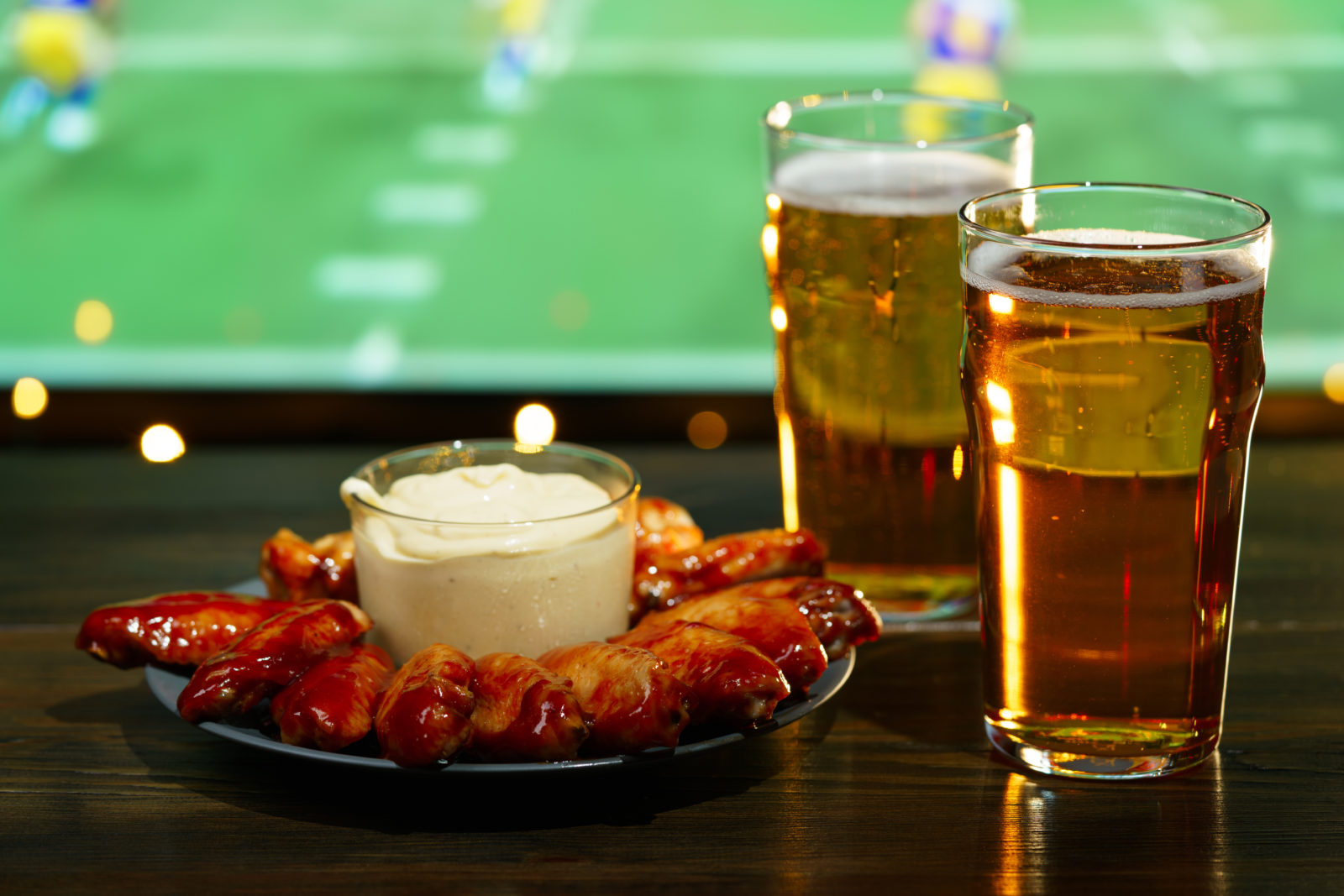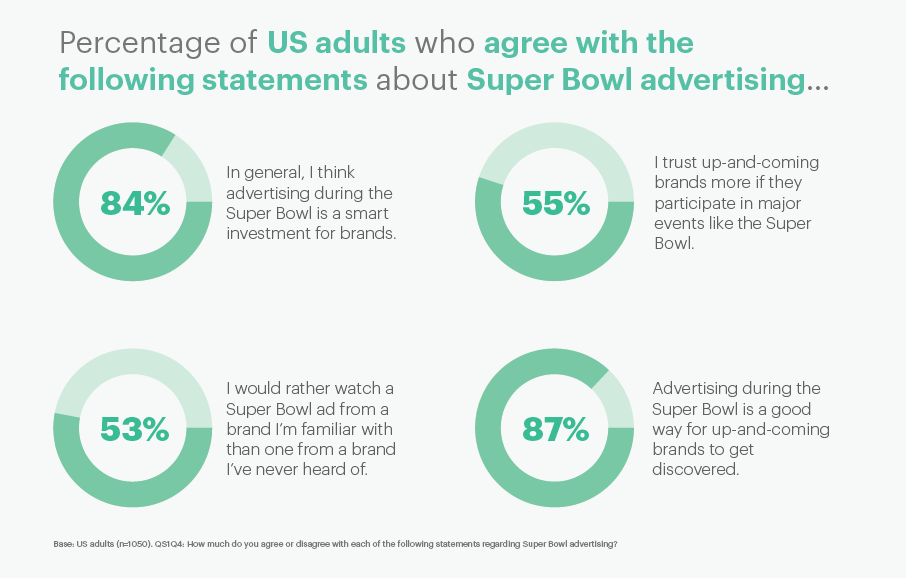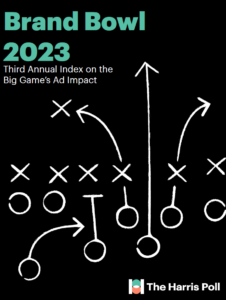Brief • 2 min Read

Running a national Super Bowl ad is a big risk for any brand, but the stakes only get higher for new advertisers. Each year, emerging brands dip their toes into the Super Bowl advertising pool, hoping that their finance departments will not be disappointed by the results. With no baseline return on investment, these brands hope that their marketing gamble will pay off. Super Bowl LVII saw 16 new brands enter the national advertising arena.
Nine-in-10 US adults (87%) see the Super Bowl as a great way for up-and-coming brands to get discovered by consumers. Anyone else remember the barrage of crypto ads during last year’s game? Airing an ad can lend credibility to a largely unknown industry or brand. Half (55%) of US adults agree that they trust up-and-coming brands more if they participate in major events like the Super Bowl (e.g., as a sponsor, advertiser).
WANT MORE INSIGHTS FROM THE BIG GAME? DOWNLOAD OUR FULL BRAND BOWL 2022 REPORT.
In some ways, Super Bowl ads seem like a no-brainer. This year, 113 million viewers tuned into the Super Bowl, and a portion of this audience was more excited for the commercials than for the football. Most consumers agree – 84% of US adults think advertising during the Super Bowl is generally a smart investment for brands. However, the potential reward comes at great financial risk.
A good number of viewers are open to learning about new brands during the Big Game, but not everyone. Half (53%) of US adults would rather watch a Super Bowl ad from a brand they are familiar with than a commercial from a brand they’ve never heard of.

Astellas brought attention to pesky menopause symptoms after the coin flip. Actress Carmella Riley asked women about VMS – aka hot flashes and night sweats. The ad launched ahead of Astellas’ new drug fezolinetant, a medication that ameliorates VMS symptoms. Astellas experienced a +1.3 increase in momentum ahead of their drug launch. But they weren’t the only pharma ad this year. Dexcom returned to the Super Bowl with Nick Jonas to showcase their G7 continuous glucose monitoring system (approved by the FDA late last year). Dexcom likewise experienced gains ahead of their product release, with a +1.1 boost in familiarity with the brand.
Danny McBride rechristened himself Downy McBride in a commercial for Downy Unstopables, but only after the product passed a rigorous multi-week sniff test. McBride tore through a neighborhood in a golf cart, passing out Downy Unstopables and evangelizing the staying power of the product’s fresh scent. It turns out that “Downy McBride” is a memorable ally, as Downy saw a +3% increase in ad recall after the game.
Ben Affleck stared in Dunkin’s debut ad, serving up smiles and excitement for the beloved donut chain’s unsuspecting drive-thru customers. Affleck is known for his love of Dunkin’ and has often been photographed with their products. His wife, Jennifer Lopez, also made an appearance at the drive-thru window to close out the commercial. Affleck’s ad spot boosted consumer perception of the Dunkin’ brand – they experienced a +3.1 boost in perceived quality and a +1.0 gain in momentum.
Stars of hit show “Breaking Bad” reunited to endorse Frito-Lay’s addictive air-popped snack PopCorners. With the help of Walter White, Jesse Pinkman, and Tuco Salamanca, PopCorners raised awareness for the recent release of their seventh flavor – Cinnamon Crunch. PopCorners saw a +3.8 boost in brand equity after the Big Game, and a significant +8.4 leap in momentum. Americans clearly think this snack is going places.
Premium dog food company, The Farmer’s Dog, pulled on viewers’ heartstrings as we watched a young girl and her pup grow up together. Eventually, the girl marries and has a baby of her own, and the commercial closes with the new mom and her greying dog curled up together. This tender story stuck in viewers’ minds, as the brand experienced a +3.0% increase in ad recall after Super Bowl Sunday.
It’s not often that religion mixes with athletics. This year, The Servant Christian Foundation purchased 90-seconds of airtime for their “He Gets Us” campaign, a rebranding campaign for Jesus. Three-quarters (75%) of US adults agree that airing an ad during the Super Bowl is a good way for non-profit organizations (e.g., religious groups, charities) to share information about their mission or cause. Their $20 million spend on air time paid off with brand equity gains. The Servant Christian Foundation saw a +3.3 bump in overall brand equity after the game, +6.6 in familiarity for this largely unknown brand and +2.2 in consideration.
Workday poked fun at the corporate habit of calling high-performing employees “rockstars” by bringing real rockstars – including Ozzy Osbourne, Joan Jett, and Billy Idol – into the workplace. Workday gained +1.0% in ad recall from pre- to post-Super Bowl.
Subscribe for more Insights
Subscribe to our newsletter for the latest trends in business, politics, culture, and more.

Related Content








